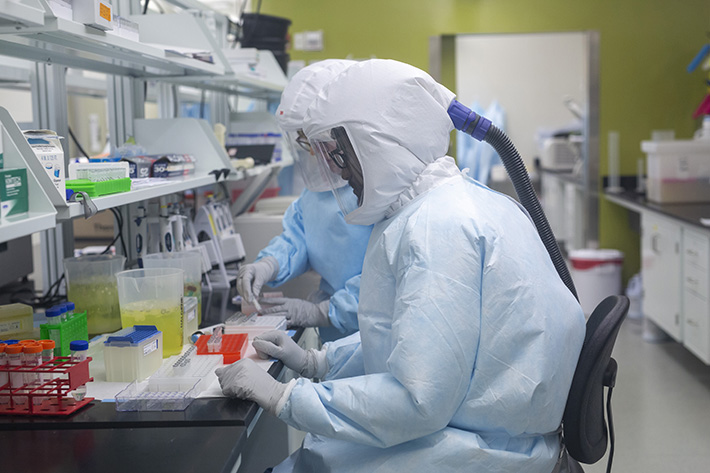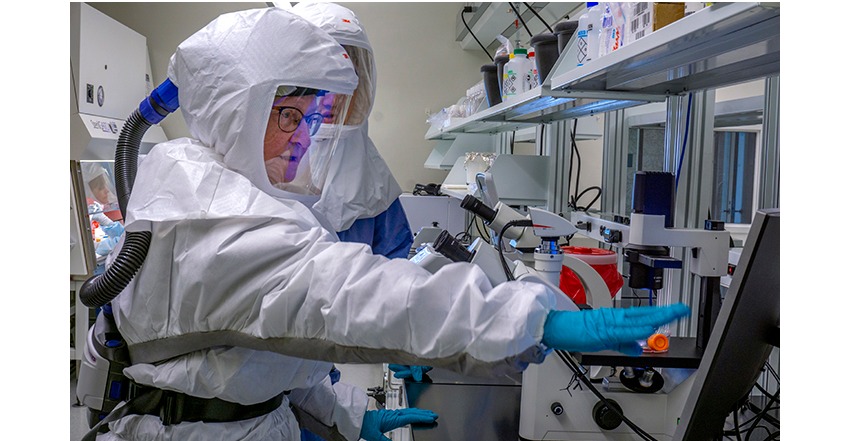Vaccines are one of the greatest public health achievements. Since Jenner developed the smallpox vaccine 225 years ago, we have continuously improved upon and refined vaccine technology. Now, with the emergence of COVID-19 several new exciting technologies are being approved. Most vaccines are developed with one goal — public health through protection against infection.
“Ultimately you want a vaccine that is immunogenic — one that produces a response in a person that prevents them from getting sick. How you get there can be different,” says Dr. Trina Racine, Associate Director of Vaccine Development at the University of Saskatchewan’s Vaccine and Infectious Disease Organization (VIDO) in Saskatoon, SK.
VIDO is one of the many international research organizations racing to develop a COVID-19 vaccine. The aim is to roll out as many safe, effective vaccines as possible to protect the globe against SARS-CoV-2 (the virus that causes COVID-19).
The oldest platforms are live attenuated and inactivated vaccines. For these types of vaccines, a live pathogen is either weakened (attenuated) or inactivated/killed (e.g., with a chemical or UV light). These vaccines help the immune system mount a response against the “wild” version of the virus or bacterium being targeted.
“Our understanding of immunology and viruses themselves has progressed and different molecular techniques have become available to us for vaccine development. As a result, we have developed a number of other vaccine platforms over the years,” Racine says.
The new kid – first off the blocks
The newest platform approved by the regulators for COVID-19 is the genetic vaccine , such as Pfizer-BioNTech and Moderna’s mRNA COVID-19 vaccines, which are already being used. These vaccines deliver the pathogens own genes to us and the resulting protein provokes an immune response. You can imagine this code as a series of letters that the cell recognizes — like a recipe for protein manufacturing. In this case, the mRNA code is for the spike protein of the SARS-CoV-2 — the viral “key” that unlocks your cells and lets the virus in.
“Basically, they just give the genetic information to your cells and then your body makes the protein. But your body still recognizes that the protein it has made is foreign – so your body will generate an immune response against it,” Racine says.
To promote stability the mRNA can be encapsulated in a bubble called a lipid nanoparticle. Lipids are part of your normal cell membranes and can also act as a delivery vehicle for the mRNA. Without this protective bubble, the mRNA would degrade quickly. The instability of mRNA is one of the drawbacks to this kind of vaccine platform: to keep it stable, some genetic vaccines need to be stored at ultra-cold temperatures, making it challenging to get this type of vaccine to remote locations.
Fighting viruses with viruses
Viral vector vaccines are another emerging platform. These vaccines use an altered, relatively harmless virus as the delivery vehicle. The Oxford-AstraZeneca vaccine is an example: it uses a strain of adenovirus (first discovered in chimpanzees) to carry the gene of the spike protein and ultimately helps us develop immunity to COVID-19.
“When that is administered, your body recognizes the spike protein of the coronavirus on the outside of the adenovirus backbone and begins to produce an immune response against it,” Racine explains.
The tried and true: subunit vaccines
VIDO has developed two subunit vaccines formulated using different adjuvants. Subunit vaccines contain an antigen (purified viral proteins that are not infectious), and often an adjuvant (an ingredient that improves the immune response of the vaccine).
VIDO’s first vaccine to enter clinical testing uses Sepivac SWE™, an adjuvant developed by Seppic in collaboration with the Vaccine Formulation Institute (both are located in Europe). The other vaccine is formulated with an adjuvant developed by VIDO and its partners as part of the original Grand Challenges in Global Health Initiative funded by the Bill & Melinda Gates Foundation.

In Racine’s opinion, all the different platforms have their own benefits. A good vaccine is one that reaches an immune response in fewer doses, cuts down on cost, and doesn’t require a lot of manipulation.
“If you can develop a vaccine that can sit on the kitchen counter for days and still be effective — that is the ideal situation,” Racine says.
Speedy but safe
The process for COVID-19 vaccine development was rapid when compared to traditional vaccine development, but safety was always a priority and development steps were not skipped. Instead, governments and companies focused on doing multiple steps concurrently, which increased development costs, but helped it go faster.
And while the timeline for clinical trials has been accelerated, these trials only proceed to the next phase after certain safety milestones are met.
Racine believes that knowledge is power. If people understand more about the vaccine development process and how they are reviewed by regulatory agencies, then there is opportunity to alleviate the hesitancy some people have when it’s time to roll-up their sleeves.
Photos: 1. Scientists in VIDO lab (Photo: Gord Waldner)2. VIDO scientists at work (Photo: David Stobbe)
